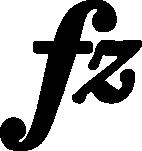



The main text comes from FE (→EE). Lack of the last accent in GE may be a common error, however, it can also prove that the sign was added only in the latest proofreading of FE. In turn, the reason of proofreading could have been a distortion of the long accent on the last quaver in the bar by the engraver of FE (such a sign is visible in AI) – cf. e.g. the Etude in A minor, No. 2, bar 8. These kind of doubts are not raised by the oversight of  in this place, as it fits into a more general tendency of reducing the number of these indications in the printed version of the Etudes.
in this place, as it fits into a more general tendency of reducing the number of these indications in the printed version of the Etudes.
Compare the passage in the sources »
category imprint: Interpretations within context; Differences between sources; Corrections & alterations
issues: Inaccuracies in FE, Errors in GE, Authentic corrections of FE
notation: Articulation, Accents, Hairpins


 in
in 
 in
in 
